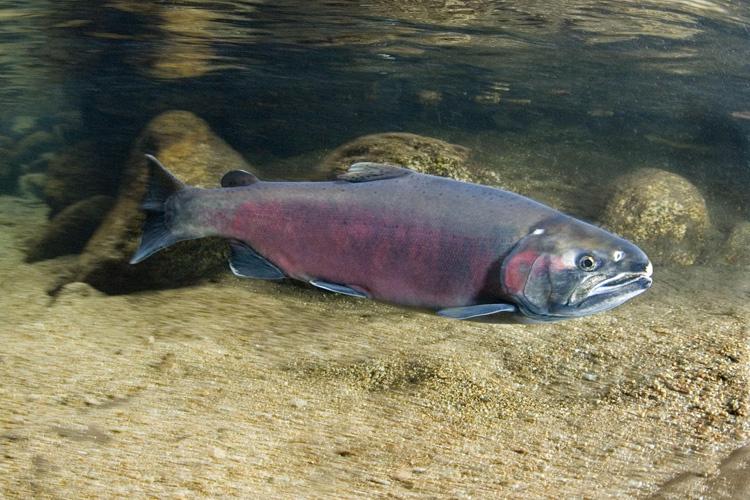Stream flows boosted by heavy rains in December and January enabled endangered coho salmon to swim up creeks in California’s San Geronimo Valley for the first time since the mid-2000s, a local salmon conservation group reported Jan. 7.
Rains in October brought the first-ever documented report of king salmon in Marin County’s Woodacre Creek.
Now the winter rains have brought coho to Montezuma Creek at Forest Knolls, Calif., for the first time in 18 years and Larsen Creek for the first time since 2006, according to Ayano Hayes, watershed biologist for the Salmon Protection and Watershed Network program of the Turtle Island Restoration Network.
“It is amazing to see these giant two-foot fish in the small creeks, some no wider than than six feet wide,” Hayes said in a statement issued by the SPAWN program. “This is extremely exciting and is the result of big storms that have let coho salmon maneuver through culverts under roads that are a barrier to migration under lower flows.”
It’s not just total annual rainfall that’s important for salmon habitat – the amount that falls over a short period is equally important, and opens up salmon habitat in the San Geronimo Valley, said Preston Brown, SPAWN’s director of conservation: “Rainfall has to be just right to allow fish to jump into and swim through artificial culverts that concentrate flow and increase velocity.”
In the 1990s SPAWN started surveying the small tributary creeks of San Geronimo for spawning salmon, and making fish rescues there in summer for juvenile coho and steelhead trout. Back then SPAWN workers regularly found fish in Larsen and Montezuma creeks, but it’s been “years since these fish have been seen in these systems, making Hayes’ sighting of these fish noteworthy,” the group says.
SPAWN posted video of the Montezuma Creek sighting on its Facebook page and the appearance of salmon in the region’s creeks created a sensation among local residents on social media.
SPAWN’s project of removing a dam on a former golf course, completed last year, is a major contribution to the Montezuma Creek recovery.
“This spawning season demonstrates the importance of the San Geronimo Valley and its tributaries to the recovery of coho salmon and steelhead trout in Marin,” said Todd Steiner, the founder and executive director of SPAWN. “We need to protect creekside habitat, limit construction of new impervious surfaces, and continue to remove all barriers to fish migration by replacing our old culverts, many decades old and in need of repair with fish-friendly culverts.”
“We can bring back the salmon of Marin from the brink of extinction if we care enough to protect and restore habitat. We have the know-how and the state and federal agencies have offered the resources. It boils down to our local elected officials having the courage to enact the regulations that will protect the habitat the fish need to survive for our children and grandchildren,” said Steiner.







